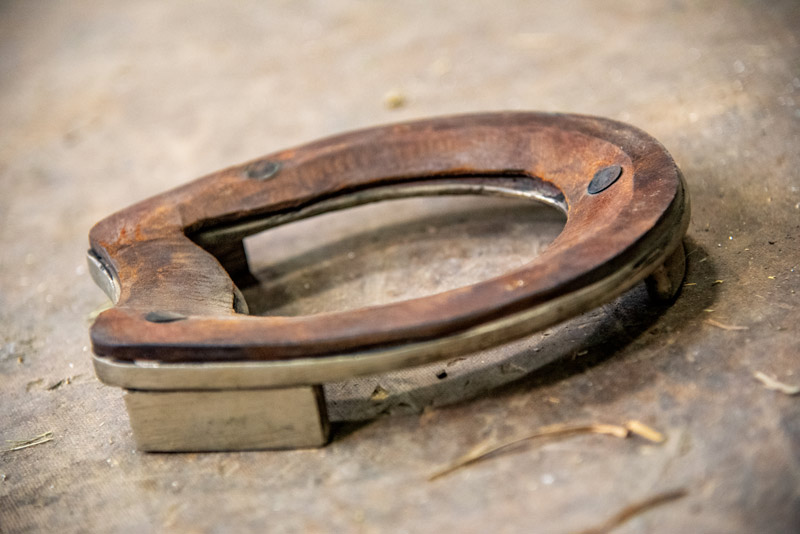American Farriers Journal
American Farriers Journal is the “hands-on” magazine for professional farriers, equine veterinarians and horse care product and service buyers.

The half-full bar shoe is among the horseshoes that are part of the Cornell University Farrier Program collection. It features an asymmetrical bar, a thicker lateral branch that offers protection, a toe grab and heel calks.
“Have this well concaved for the full side of the hoof, as this will give good protection,” Henry Asmus, the former Cornell University Farrier Program instructor, wrote in “Horseshoes of Interest to Veterinarians,” which was written for a New York state report in 1917-18. “As a rule, the sole is very thin on the full side; use a rim of leather just under the bearing surface of the shoe. The leather is there to break the concussion from the road.”
The days of the working horse were proverbially numbered when J. Frank and Charles Duryea built and drove the first gasoline engine automobile through the streets of Springfield, Mass., on Sept. 22, 1893.

As with most new inventions, it would take some time for the automobile to catch on. The cost was prohibitive for most Americans, as just 2,500 automobiles were manufactured in the United States by 1899. That was hardly enough to meet the needs of a country with a population of more than 76 million. However, the daily chores continued to be completed with the help of 21.5 million horses.
By the time Asmus emigrated from Hanover, Germany, and joined the staff of Cornell University’s New York State Veterinary College in Ithaca, N.Y., in 1913, things were changing. Henry Ford’s assembly line…